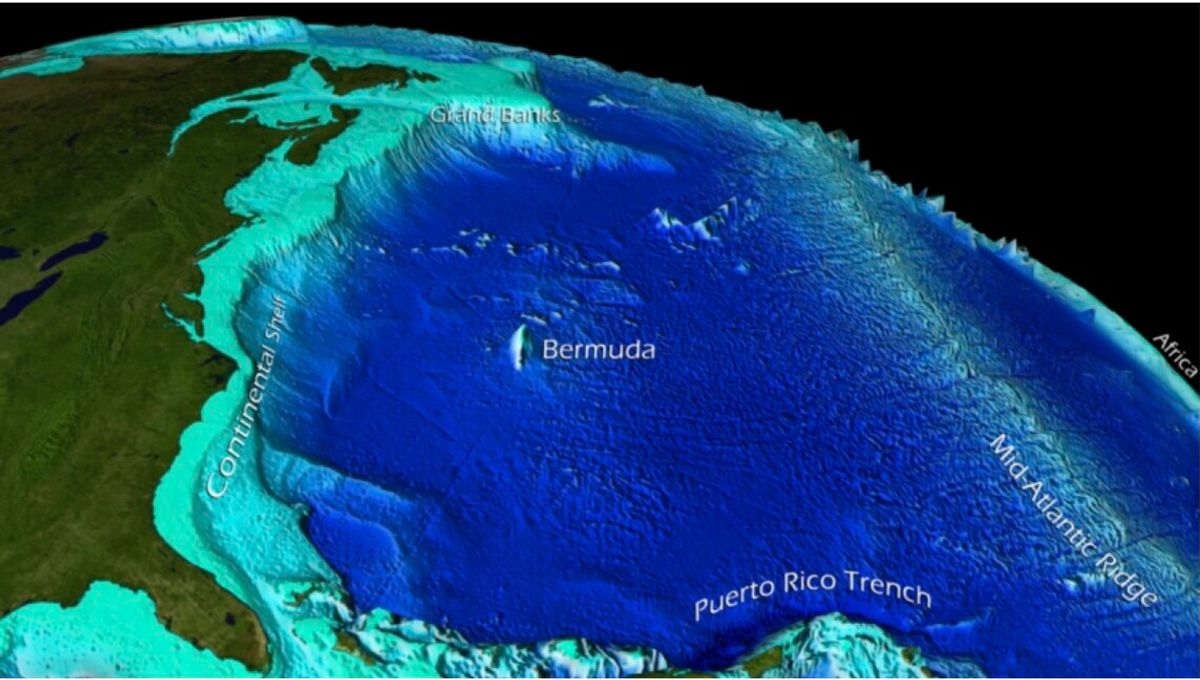
The Blob – not the carnivorous ameboid alien antagonist from a schlocky 1950s sci-fi, but something much worse – made headlines between 2013 and 2016 as a massively devastating marine heatwave in the northeastern Pacific. As the waters off the western coast of the US warmed, ecosystems were upended, coral reefs were bleached en masse, and over a million birds turned up dead across the whole of North America.
Now, new research suggests that may have just been the tip of the … well, whatever the opposite of an iceberg is. Not only have scientists at NOAA, the National Oceanic and Atmospheric Administration, found evidence of marine heatwaves at the bottom of the ocean, but it seems these deeper versions pack a more concerning punch than their previously recorded cousins like The Blob: they last longer, can cause more drastic heating, and sometimes occur with little or no evidence of warming at the surface.
“It can be happening without [fisheries] managers realizing it until the impacts start to show,” said Dillon Amaya, a research scientist with NOAA’s Physical Science Laboratory and lead author of the new paper, in a statement on the results.
Those impacts have the potential to be catastrophic – both for marine ecosystems and, by extension, the industries that rely on them. While the world’s oceans may not be what springs to mind when we consider the worst-affected victims of global warming, they’re in fact responsible for absorbing about 90 percent of the excess heat generated by man-made carbon emissions.
As such, it’s warming faster than the planet average, increasing in temperature by about 1.5°C (2.7°F) over the past century – with marine heatwaves becoming around 50 percent more frequent in the last decade alone.
And with financial losses just due to The Blob totaling close to $200 million by some estimates, it’s no wonder that there’s been extensive interest in monitoring marine heatwaves over the past few years – simple ecological concern notwithstanding – but this is the first time that scientists have managed to delve so deep.
That’s partly because monitoring marine temperatures close to the surface is just so, well, easy. Not only are there established and straightforward methods of analyses for the data collected at the surface, but there’s also a whole lot more data to begin with: there are a wealth of high-quality observations taken by satellites, ships, and buoys.
But equally, monitoring the bottom of the ocean is notably difficult. Due to that lack of data, the researchers had to use a technique called “reanalysis” for the study – a method that involves taking whatever observational data is available, and using computer models to sort of “fill in the blanks” where information is absent.
It’s an approach that’s been around for a long time, but it’s only very recently that reanalysis techniques and technology have become powerful enough to carry out the kind of assessment we’re seeing now. “Researchers have been investigating marine heat waves at the sea surface for over a decade now,” said Amaya, “[but] this is the first time we’ve been able to really dive deeper and assess how these extreme events unfold along shallow seafloors.”
And with the floodgates open, it’s imperative to maintain this deep-sea monitoring, the team say. Increased temperatures at the bottom of the ocean have been linked to a whole host of ecological problems – ranging from the expansion of invasive species like lionfish to the collapse of longstanding native populations like the lobsters of southern New England – and with these new data collection methods, the researchers hope to develop real-time monitoring capabilities that can alert marine resource managers to deep ocean conditions.
“We know that early recognition of marine heat waves is needed for proactive management of the coastal ocean,” co-author Michael Jacox, a research oceanographer who splits his time between NOAA’s Southwest Fisheries Science Center and the Physical Sciences Laboratory, commented.
“Now it’s clear that we need to pay closer attention to the ocean bottom, where some of the most valuable species live and can experience heat waves quite different from those on the surface.”
The paper is published in Nature Communications.
Source Link: Scientists Have Found Heatwaves At The Bottom Of The Ocean, And That's Extremely Bad News